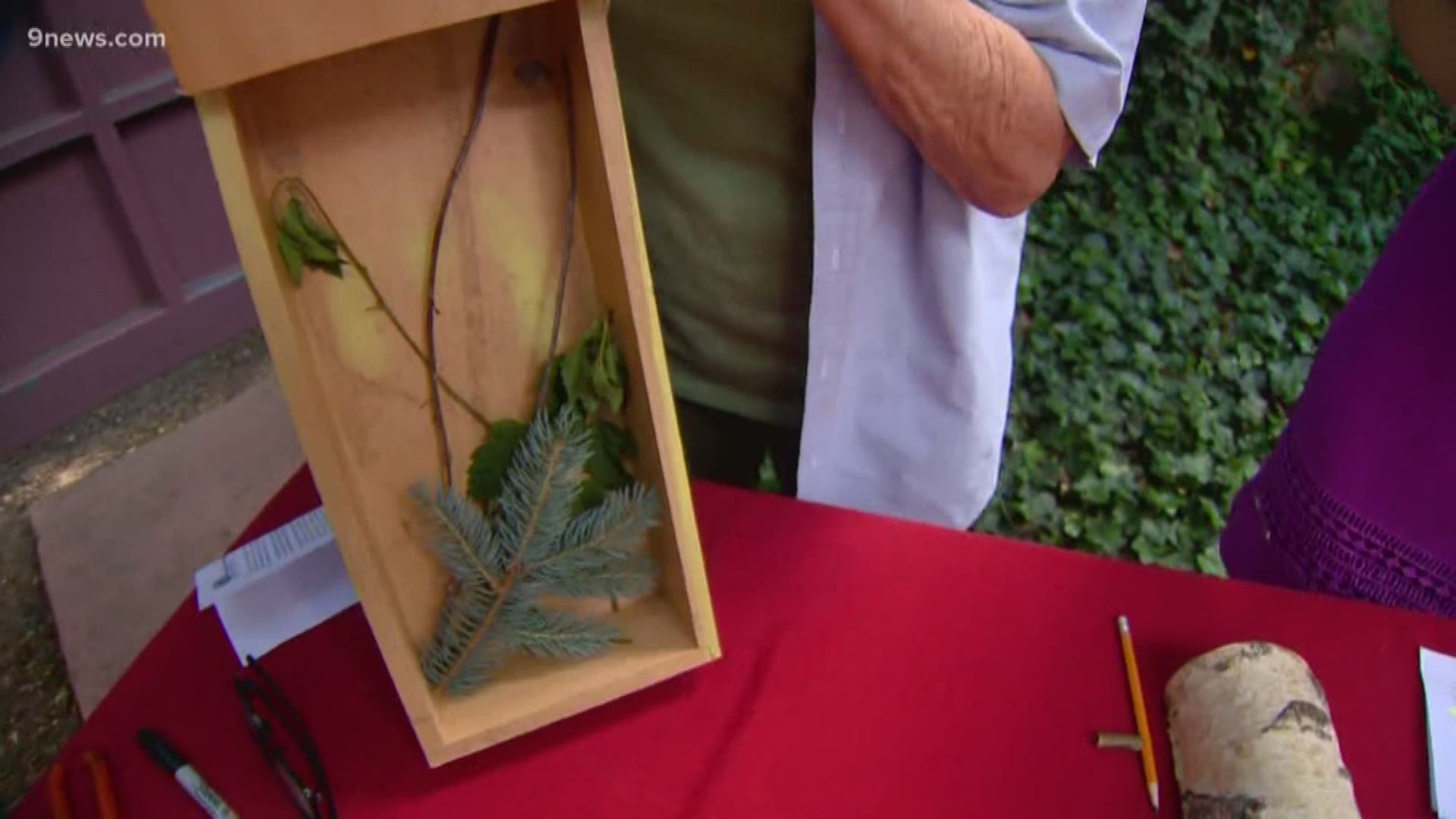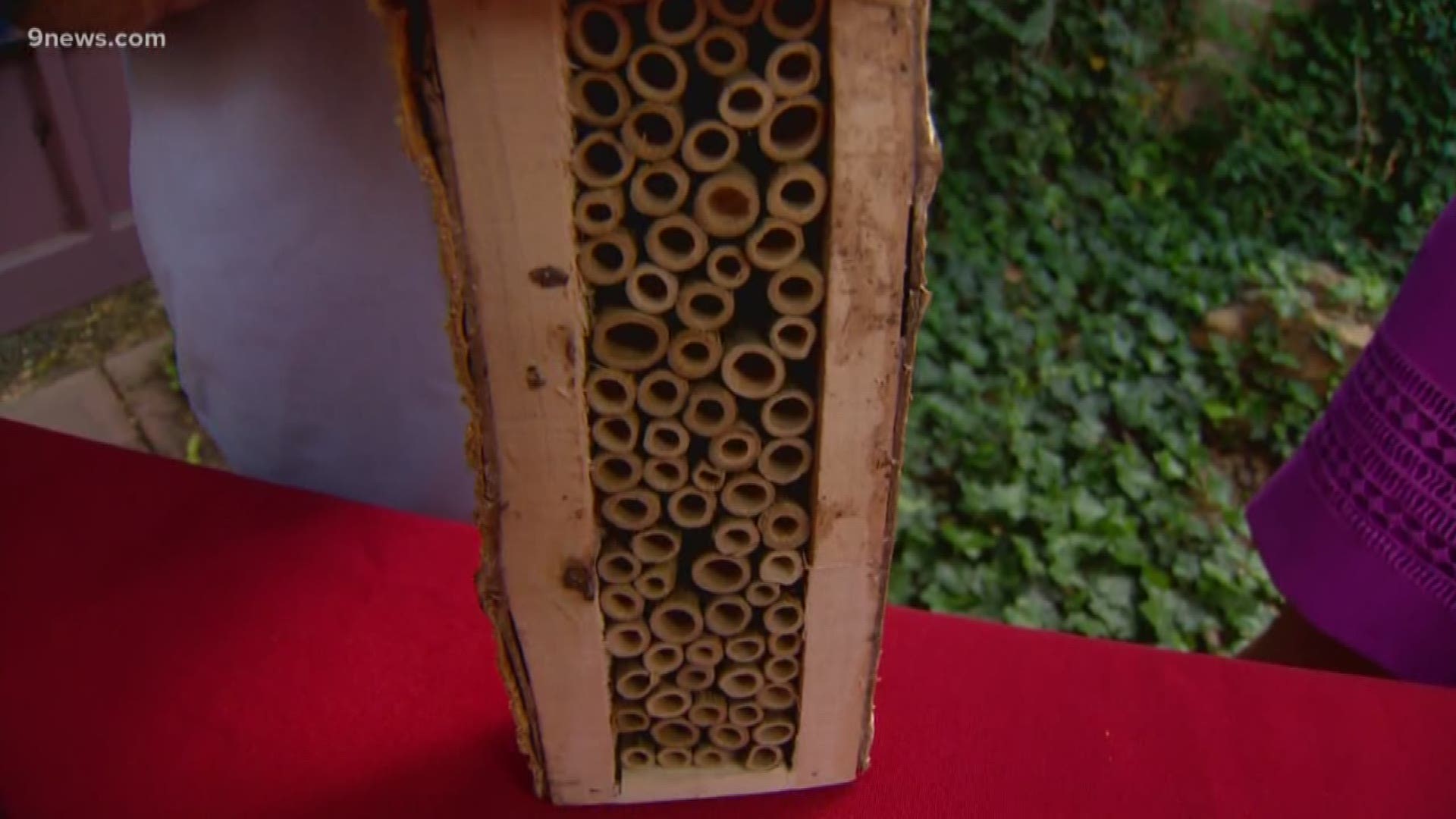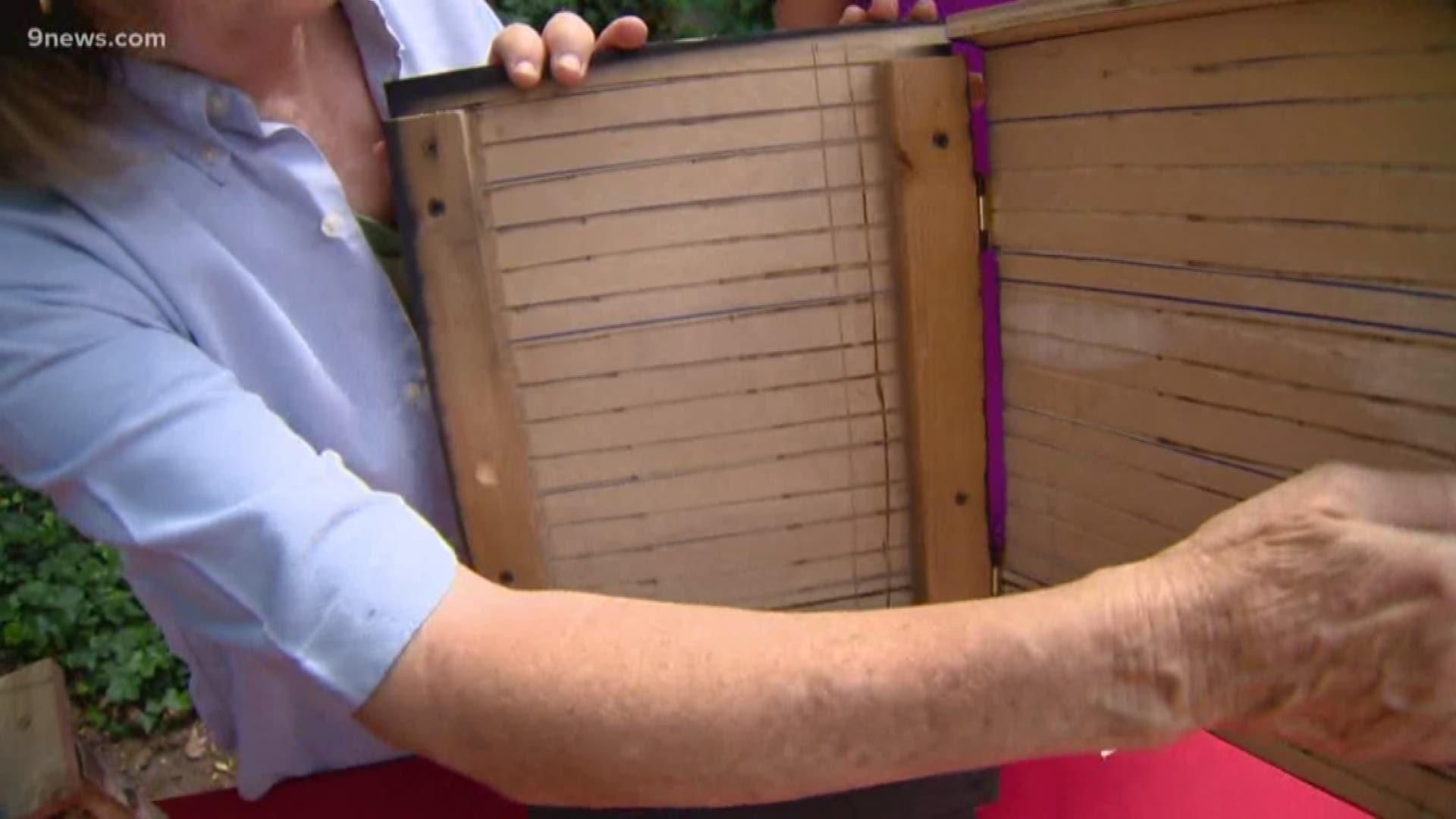DENVER — All living things need food, water, and shelter. Most of us have an idea of how to provide food and water for pollinators, but do you know how to give them a home in your yard?
Butterfly homes
Butterflies make great pollinators because they feed on native flower species and travel much greater distances than bees. They also see red (bees can't see red) and they detect ultra-violet light in flowers and are attracted to the designs the UV creates.
You can add a brightly colored box with some twigs inside for perches and small slits for openings (so it doesn’t become a birdhouse) as a nice place for butterflies to stop or to hibernate. But don’t expect a lot of activity like you would with a birdhouse. Since butterflies prefer the underside of a leaf or a stone crevice to rest, a butterfly box will be a good resting spot only if others aren’t available.
Bee hotels
While honeybees live in hives, most bees—especially Colorado’s nearly 1,000 species of native bees—are solitary. Bumblebees are semi-social and nest in the ground—mostly in abandoned rodent holes. They live near each other but not together like roommates.
Native mason bees are “tube nesters.” They will line a tube with mud and pollen and nest in it as well as hibernate for the winter when they will close up the tube with mud. To give them a nice little hotel, you can provide hollow tubes for them from bamboo, cardboard tubes, or paper straws. You can also use a drill to make holes in a large cross-section of wood. Bundle the tubes with tape, zip ties, or string and put the bundle into a structure to keep it in place.
You can make a wooden frame or use a plastic container placed on its side. Be sure that there is an overhand that will keep the bees safe and dry when it is windy or rainy. Now, each bee has a unit in this hotel where it can lay eggs or hibernate.
Be sure to put your bee hotel against a building or tree trunk to keep it from falling. And don’t worry about protecting yourself—mason bees are gentle, and they rarely sting. If they do, it’s not as bad as a honeybee sting.
Bat “caves”
Bats are pollinators, too. They help our landscapes by pollinating moonflower, evening primrose, yucca, and more than 500 other species of plants. They do their work at night, just like hummingbird moths and most other moths. And bats eat mosquitoes, so having them in your landscape has multiple benefits.
A bat house should be taller and wider than a birdhouse or other pollinator shelter. The inside should have a surface that bats can cling to—try adding some mesh to the interior walls if your bat box is smooth inside. More than one “room” or chamber is better.
Put the box on the warmest side of your house or garage (this helps buffer the box against temperature fluctuations), about 12 to 18 feet from the ground.
Bats need very warm temperatures—85 to 95 degrees to roost, so painting it a dark color is also good. Don’t put it in a tree—the shade would cool the shelter too much.
SUGGESTED VIDEOS | Feature stories from 9NEWS



